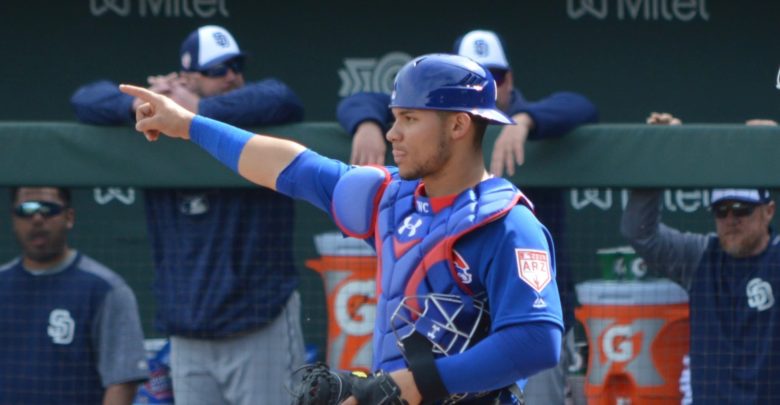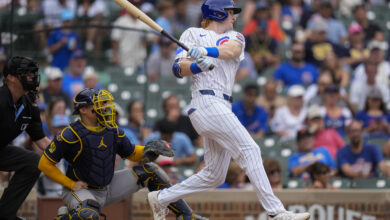
Projection of Cubs Contract Values Reveals Huge Surpluses, Relatively Small Deficits
As the Cubs gear up for another run at sustaining their success of the past four seasons, several questions remain unanswered. Why haven’t they made that major free agent signing? Why not trade from the plethora of young talent on the current roster to fill holes? There are others, of course, but these are perhaps the most pressing.
It’s very easy to question the methods of this front office and why they aren’t consistently spending more money in the prime years of the competitive window. It’s equally simple to envision what the roster could become by trading away young players under control for several more seasons in exchange for higher caliber players to help the team now.
In reality, this front office has done a phenomenal job of acquiring young positional talent that costs relatively little compared to production. The Cubs were already able to win a World Series by bringing together a number of young players either being paid league-minimum salaries or in the early years arbitration eligibility. This allowed the front office to spend on free agent pitching to offset the deficit in the farm system.
That same roster template remains in place today, except that those young players are further along in their respective contract windows. Thus, many of them have seen their surplus value decrease year over year at significant rates. Wait, what’s “surplus value?”
Glad you asked. It’s actually a relatively simple concept that serves as a cornerstone piece of analysis used in major league front offices. Surplus value is simply a calculation that puts a dollar value on a player’s production relative to their contract for a given year. Using a value of around $8-9 million per win above replacement allows us to compare how well a player performed relative to his salary.
Let’s use Kris Bryant for example. In 2019, he is projected to be a 5.5 fWAR player according to Steamer. For my calculations, I assumed the value of 1 fWAR to be $8.3 million, accounting for a 5 percent rate of inflation year over year after 2019. Bryant’s 2019 salary is already set at $12.9 million and I was able to assign contract estimates for the remaining life of his deal using conservative increases for his next two arbitration years.
Below is what the final surplus value calculation looks like:

As you might have already guessed, Bryant is expected to produce far more value than what the Cubs will be paying him over the next three years of team control. Successful franchises build around several of these players, allowing them to take gambles in free agency on positions of need. For the Cubs, these gambles have come in the form of pitching and certain right fielder formerly of the St. Louis Cardinals.
Some have paid off (i.e. Jon Lester), whereas others remain largely in question (Tyler Chatwood and Yu Darvish). The following chart depicts surplus value estimates for all players that have reasonable 2019 Steamer projections and are expected to contend for Opening Day spots. I should note that David Bote‘s value via Steamer is very much in question, leading me to exclude it from this exercise.

As you can see above, Willson Contreras, Bryant, and Anthony Rizzo are projected to generate the most surplus value for the team throughout the lives of their contracts. Shocker, right? On the other hand, Chatwood, Darvish, and Jason Heyward are projected to be the main deficits. Also not surprising.
On a side note, take a look at the remaining players generating sizable surpluses for the team moving forward. Many of them have been rumored in trade talks this winter or wished away by fans. It’s important to note that players generating this much excess value are crucial to allowing a team to sustain its success for several years. Having these players on a roster allows a front office to take calculated risks in free agency and the trade market while keeping some semblance of financial flexibility.
This exercise is important for front offices in player evaluation and I believe it’s equally important for fans to understand. Players that might not be making star-level contributions on the field but are producing modestly at a cheap price are extremely valuable for a team that is trying to build a dynasty.
As painful as it can be to look at players that are creating deficits, it’s also very enlightening to see the countless players on this roster that are producing well above what they are being paid. A little quick math reveals that the surpluses far outweigh the deficits, at least on paper.
Now it’s a matter of translating those results to the field.

